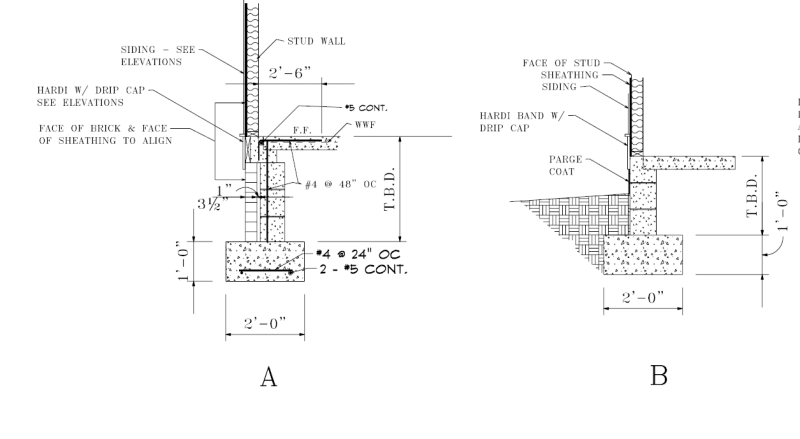I have a client that wants to use the following 2 details for a subdivision. Some houses may be 2 story. Detail A is the one that bothers me. They want the single wythe brick veneer to align with the wood stud wall. I already see their vertical bar needs to embed into the foundation but the concept of making the brick veneer load bearing seems to have several potential flaws. Even if they lay the brick while laying the block, I see slight rotation of the foundation possibly losing the bearing of the upper header block on the brick below. This could allow the header block to shear off. At the same time, I see making the detail where it is not reliant on the brick below difficult also.
Any thoughts or suggestions as to how to achieve this detail. Since they want 1 detail for all circumstances, it is not possible to avoid uneven soil bearing completely. I am currently assuming the T.B.D. will be set at 40" max. I am not really concerned about the quality of workmanship from the Client.

Any thoughts or suggestions as to how to achieve this detail. Since they want 1 detail for all circumstances, it is not possible to avoid uneven soil bearing completely. I am currently assuming the T.B.D. will be set at 40" max. I am not really concerned about the quality of workmanship from the Client.

